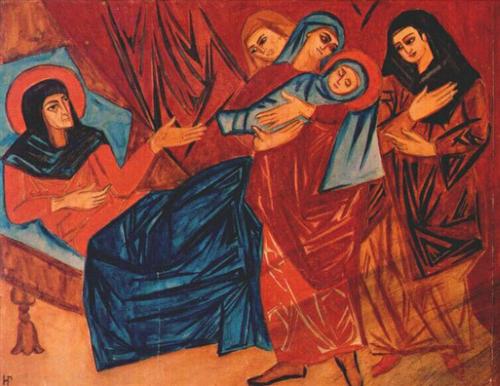 |
| Nativity -- Natalia Gonchorova (1910) |
Many churches, perhaps most, have multiple services at Christmas, so the
Lectionary provides three sets of 'propers', readings that can be used in every year of the 3-year cycle.
 |
| Nativity -- Giotto |
It is notable that all three
sets forge a connection between the prophet Isaiah and the birth of
Jesus. This
connection is crucial to understanding the significance of that birth, and the Epistle readings from Hebrews and Titus are chosen to make this clear.
Thanks to modern scholarship, however, we now know something that the
authors of those epistles did not know. Isaiah is really
three books. Moreover, the authors of these three books (Chaps 1-39,
40-55 and 56-66) lived and wrote several hundred years apart – before,
during and after the traumatic capture and exile of the Israelites in Babylon.
The
editing of these materials into “one” book is no accident. Whoever its
editors were, they correctly perceived that the same spirit, and in
large part the same theme, animates them all – how to have a faith that
endures the vicissitudes of time and circumstance. This common theme makes it possible for the Old Testament readings
for Christmas to be taken from all three -- a fact that carries
an important lesson for us.
When John the Baptist asks Jesus if he is
‘the one who is to come’, he is making reference to a hope and a
yearning that has persisted over a very long period of time, and across
dramatically changing fortunes. We should take this timescale to heart.
 |
| Nativity -- Hornhorst |
“A
thousand ages in Thy sight, are but an evening gone” Isaac Watts
reminds us in his paraphrase of Psalm 90. It is easy for us to confine
the advent of the Messiah to the deeply intriguing and appealing, but
brief event that is the Nativity. While God’s saving work in his Messiah
certainly began at Christmas, only thirty years later, after his death and
Resurrection, was the birth of Jesus dimly
recognized for what it truly was. And its full significance, Christians came to see, lay within the immensely vaster
time scale of God’s redeeming history.
 |
| Nativity -- Gauguin |





